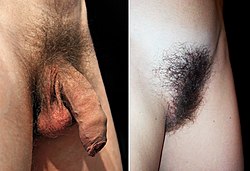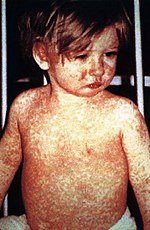Search results
Appearance
There is a page named "Frictional alopecia" on Wikipedia
- Tumor alopecia)Hair loss, also known as alopecia or baldness, refers to a loss of hair from part of the head or body. Typically at least the head is involved. The severity...48 KB (5,558 words) - 18:10, 9 January 2025
- Traction alopecia is a type of alopecia or hair loss caused by a chronic pulling force being applied to the hair. It commonly results from a person frequently...12 KB (1,332 words) - 09:29, 24 March 2025
- soap Razor electric safety straight disorders Alopecia areata totalis universalis Frictional alopecia Pattern hair loss Hypertrichosis Management Trichophilia...24 KB (2,503 words) - 13:57, 2 February 2025
- soap Razor electric safety straight disorders Alopecia areata totalis universalis Frictional alopecia Pattern hair loss Hypertrichosis Management Trichophilia...12 KB (1,295 words) - 17:51, 20 October 2024
- soap Razor electric safety straight disorders Alopecia areata totalis universalis Frictional alopecia Pattern hair loss Hypertrichosis Management Trichophilia...43 KB (4,652 words) - 04:54, 17 March 2025
- soap Razor electric safety straight disorders Alopecia areata totalis universalis Frictional alopecia Pattern hair loss Hypertrichosis Management Trichophilia...5 KB (433 words) - 09:21, 20 February 2025
- Tendon friction rub)Ulcers Hair Telogen effluvium Androgenic alopecia Alopecia areata Systemic lupus erythematosus Tinea capitis Loose anagen syndrome Lichen planopilaris...38 KB (3,337 words) - 22:36, 4 January 2025nails Traction alopecia Traumatic alopecia Traumatic anserine folliculosis Triangular alopecia (temporal alopecia, temporal triangular alopecia) Trichomegaly...198 KB (17,971 words) - 12:13, 2 December 2024thickened and sometimes hardened skin that forms as a response to repeated friction, pressure, or other irritation. Since repeated contact is required, calluses...16 KB (1,762 words) - 05:37, 30 March 2025persons can still be identified by their hair on other parts of their body. Alopecia Hair removal Hirsutism Human hair color Trichotillomania Hoover, Ezra;...30 KB (3,751 words) - 21:14, 26 March 2025
- happens a permanent change of hair loss happens this is known as traction alopecia. By the late 17th century, wigs in various shapes and sizes became the...28 KB (4,374 words) - 02:27, 29 March 2025
- 1 diabetes mellitus, psoriasis, Addison's disease, pernicious anemia, alopecia areata, systemic lupus erythematosus, and celiac disease. Among the inflammatory...42 KB (4,414 words) - 02:09, 19 March 2025
- acute urticaria (viral exanthem). Less common causes of hives include friction, pressure, temperature extremes, exercise, and sunlight.[citation needed]...51 KB (5,875 words) - 23:23, 5 April 2025
- skin pathogen to a hair follicle. Hair follicles can also be damaged by friction from clothing, an insect bite, blockage of the follicle, shaving, or braids...8 KB (749 words) - 18:24, 2 April 2024
- lesions that are caused by reactive keratosis (smoker's keratosis or frictional keratoses e.g. morsicatio buccarum) are not considered to be leukoplakias...61 KB (6,922 words) - 14:55, 19 February 2025
- federal cabinet member to do so. Dutton suffers from the skin condition alopecia totalis. Dutton supports the Brisbane Broncos in the National Rugby League...199 KB (16,079 words) - 02:02, 7 April 2025
- one tablet daily. Deficiency symptoms include loss of taste and smell, alopecia, glossitis, stomachitis, paronychia, sterility, enlarged liver or spleen












